Essential Idea: Chromosomes carry genes in a linear sequence that is shared by members of a species
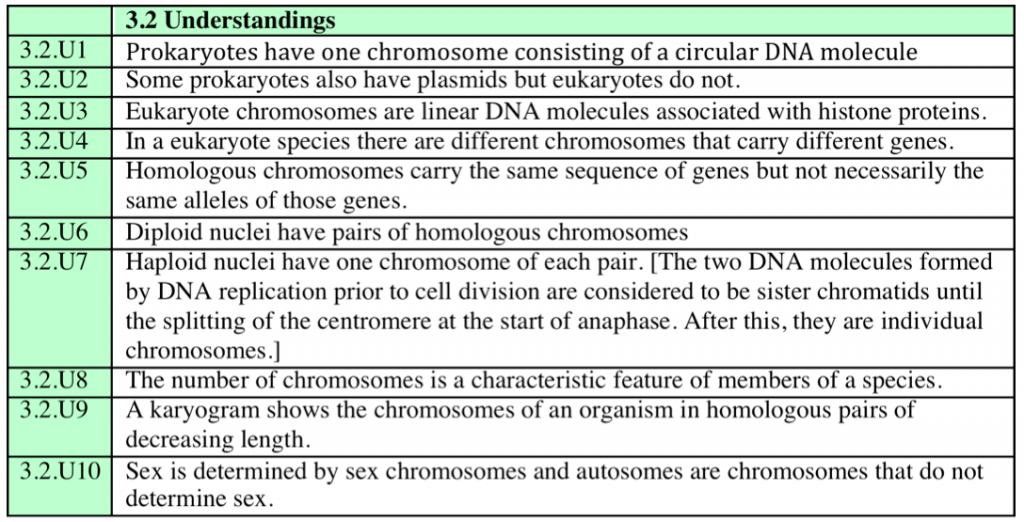

Prokaryotic Chromosomes
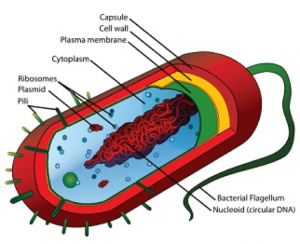
- Prokaryotes have a single, long, circular thread of DNA
- Coiled up and concentrated in the nucleoid region
- 1 Chromosome, 1 copy of each gene, no histone proteins
- Prokaryotic bacteria may have plasmids (not found in eukaryotes)
- Plasmids = small loops of DNA that are extra copies of some genetic material (Not connected to main chromosome)
- Replicate independently of chromosomal DNA
- Not needed for daily life of cell – can give advantages to cell in unusual conditions (i.e. antibiotic resistance)
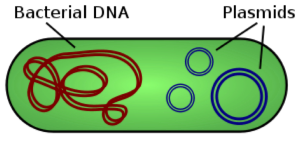
- Plasmids can be passed between prokaryotes (conjugation – horizontal gene transfer) and can be incorporated into the chromosomal DNA
- Due to this, scientists use them for genetic engineering and gene transfer (ex. The gene for insulin)
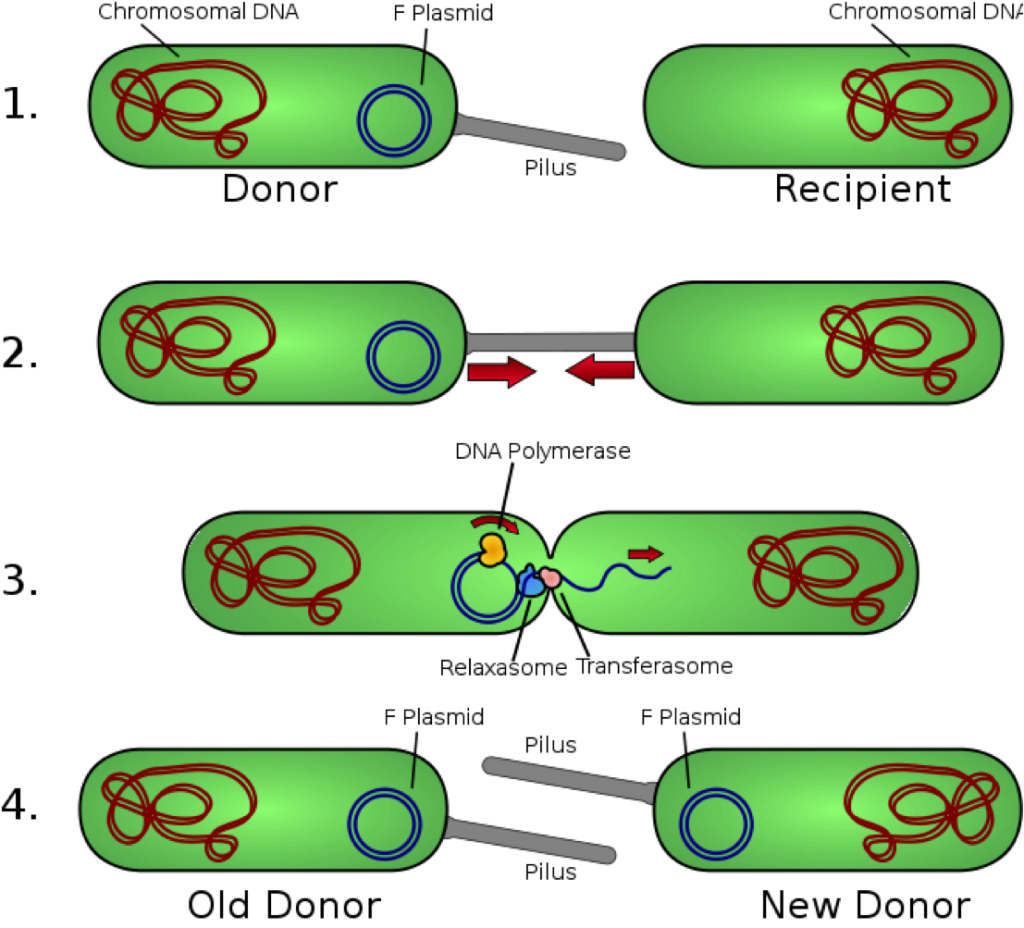
Cairns’ Technique
- Cairns supplied cell with a radioactive version of thymidine – a component of a DNA nucleotide (pentose sugar bonded to thymine)
- This radioactive version is called 3H-Thymidine (3H = radioactive isotope of H)
- 3H-Thymidine is used because it will selectively label only DNA, not RNA. Why?
- The cells were broken open by enzymes and the cell contents were applied to a photographic emulsion and placed in the dark (~2 months)
- Radioactive 3H Thymidine reacted and emitted particles that exposed the film, creating an autoradiogram.
- The results shows the location of the 3H thymidine and therefore the presence/location of the thymine in the DNA strand.
- Cairns found that prokaryotic DNA also replicates semi-conservatively.
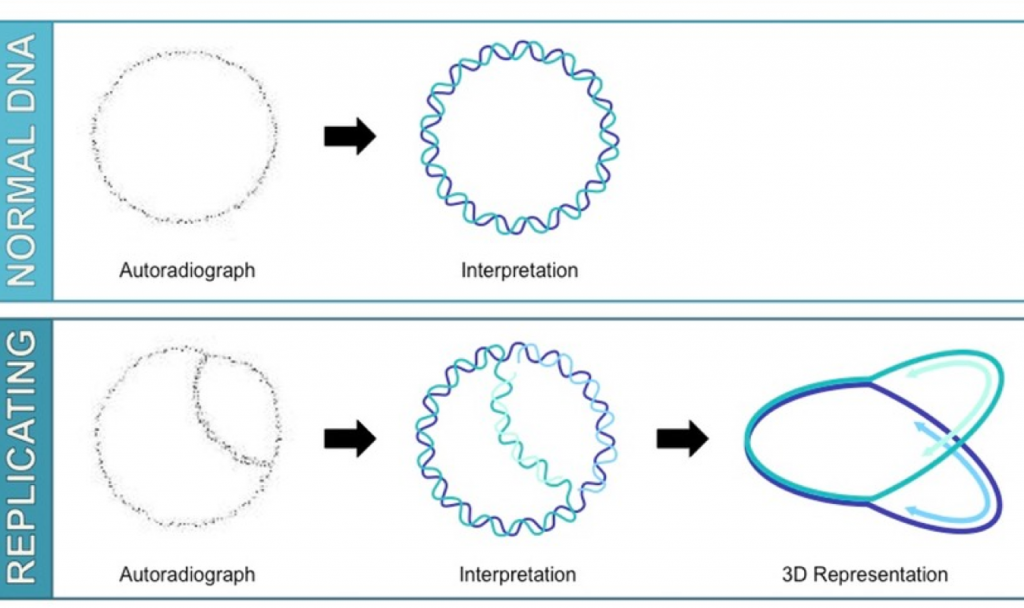
Eukaryotic Chromosomes
- Eukaryotic chromosomes are linear and are made up of DNA and histone proteins
- Histones act as spools in which the DNA winds around
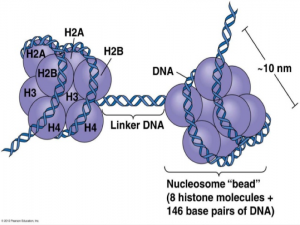
Figure 5: Nucleosome structure - Chromatin = strands of DNA and histones tightly packed together
- Nucleosome = DNA wrapped around 8 histone proteins. (DNA wraps twice around the histone protein core)
- DNA is attracted to histones because DNA is negatively charged and histones are positively charged.
- Eukaryotes have multiple chromosomes
- All individuals of a species have same number of chromosomes
Chromosomes vary by:
- Length (# of base pairs)
- Position of the centromere
- Genes present (Each gene is at a specific locus – always found at the same position on the same chromosome)
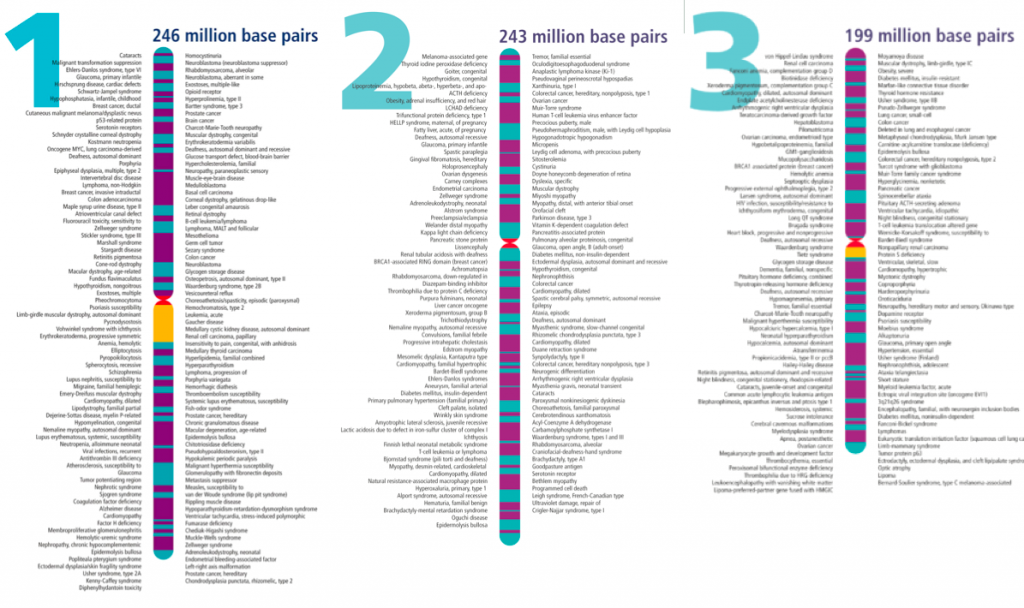
Homologous chromosomes are chromosomes within each cell that carry the same genes.
- Although homologous chromosomes carry the same genes they are not identical because the alleles could be different.
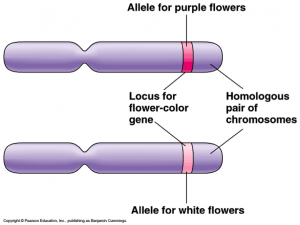
Figure 6: Representation of homologous chromosomes – notice how they can contain different alleles - Sister chromatids – two identical copies (chromatids) formed by the replication of a single chromosome, with both copies joined together by a centromere
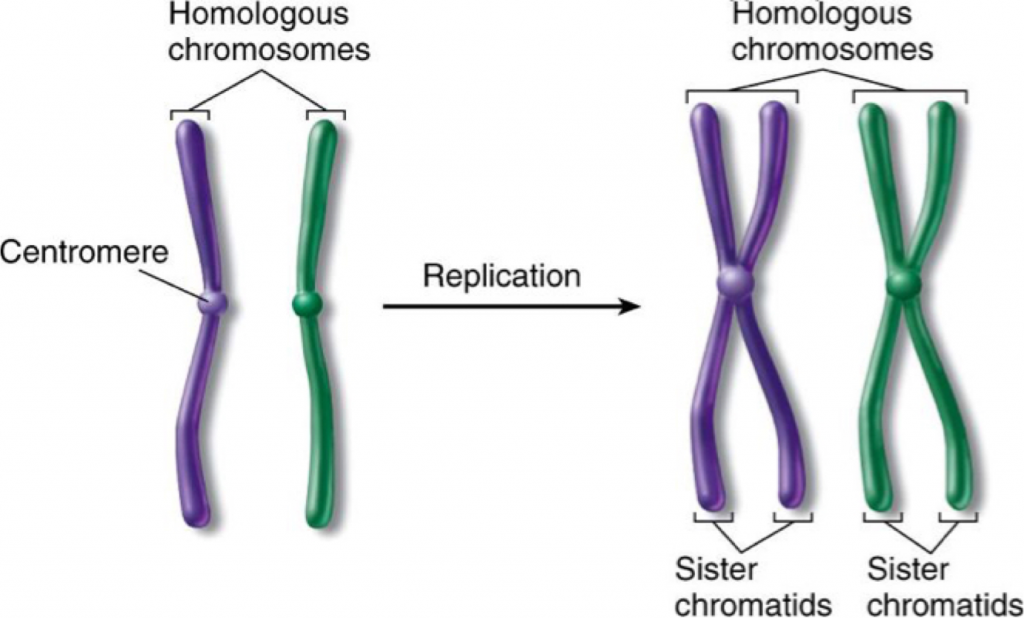
- Diploid (2n) = a cell that has pairs of homologous chromosomes (Most cells in human body are diploid)
- Haploid (n) = a cell that has a single chromosome from each pair (Sex cells or gametes)
- Haploid gametes (sperm and egg) fuse to create a diploid zygote.
N number = number of different chromosomes possessed by a species.
- The N number is a characteristic feature of species members (organisms with different numbers are unlikely to be able to interbreed)
- Humans have 22 autosomal pairs of chromosomes and 1 pair of sex chromosomes
- This 23rd pair determines the sex of the offspring – females are XX and males are XY.
- The X chromosome is longer and contains more genes essential to human development.
- The Y chromosome has a smaller number of genes, many of which are only necessary for male development.
Karyotyping
- Karyotype = Number and appearance of chromosomes in a cell.
- Karyogram = Diagram/photo of chromosomes in a cell arranged into homologous pairs and in sequence.
- Chromosomes are arranged in pairs according to their size and structure (largest = chromosome pair 1, smallest = 22)
- The 23rd pair are the sex chromosomes.
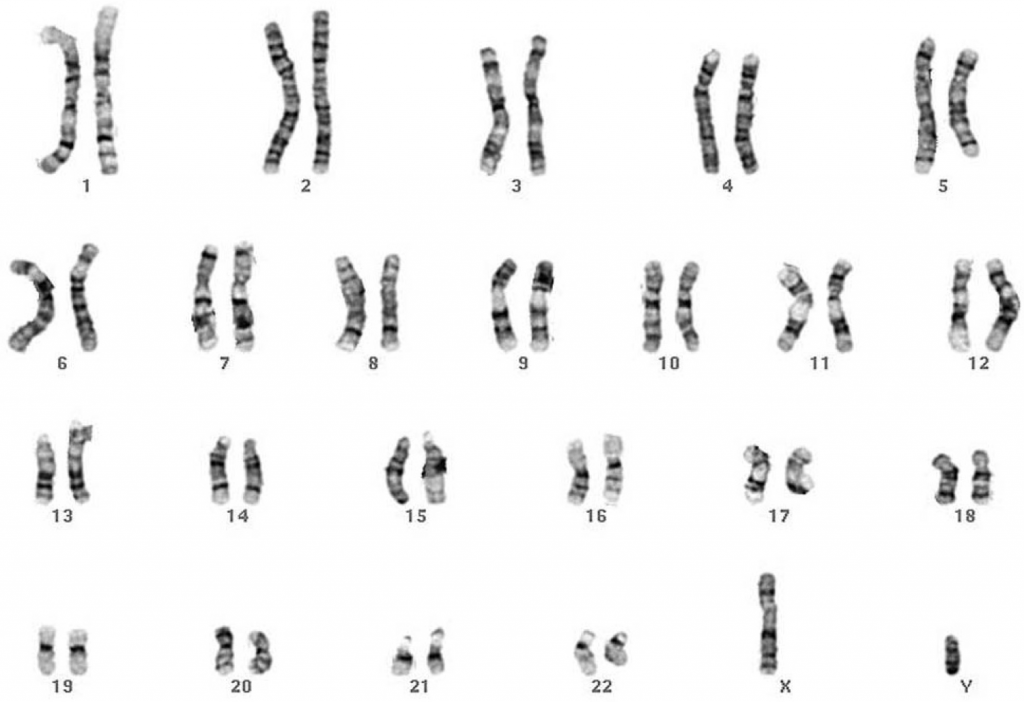
Comparing Prokaryotic and Eukaryotic chromosomes
| PROKARYOTE | EUKARYOTE | |
| # of Chromosomes | 1 | 2 or more* |
| Shape | Circular | Linear |
| Histones | Not present** | Present |
| Presence of plasmids | Sometimes | Never |
| Organized into pairs | No | Yes |
*- Rare for eukaryotes to have one chromosome but some can (ex. Male bees)
** – Histones present in archean DNA but not bacterial
Comments by shaun pletsch